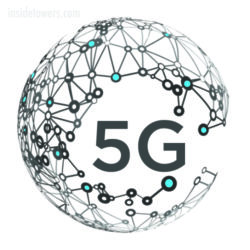In an effort to monetize their new shiny 5G standalone equipment, carriers will be deploying network slicing around the world in 2022. Real-world examples are being launched that show how network slicing and 5G offer flexibility never seen before in cellular networks, according to Ajay Gautam, Ericsson (NASDAQ: ERIC) Strategic Product Manager 5G RAN.
“The year 2022 is quickly becoming the year of network slicing and monetization as operators move to maximize their ability to tailor their offerings to their customers,” he wrote in an online blog. “Such unique deployments using common shared 5G networks can boost a national economy, supporting faster industrial transformation and, along with it, faster 5G adaptation.”
At the end of March, Smart Communications, Inc. deployed a fully functional, end-to-end network slicing proof of concept on its 5G SA network in the Philippines. The PoC was completed in a laboratory in Makati City within the metro Manila market.
The end-to-end network slicing system at the Technolab is composed of slicing functions in each part of the network — access, transport and core. Smart joins the first global operators who have implemented 5G standard network slicing with a slice controller for each part of the network, according to Arvin Siena, VP/Head of Technology Strategy and Transformation Office, Smart.
“This is a very exciting opportunity for us to develop new capabilities that will enable us to offer differentiated services or services with varying levels of quality. This means we can partition the network for specific purposes,” Siena said.
Last month, Malaysia’s communications regulator, the Digital Nasional Berhad, announced that it would use Dynamic Radio Resource Partitioning to allow six mobile network operators to deliver customized 5G services with guaranteed performance, thanks to network slicing.
The software solution dynamically allocates spectrum resources and supports multi-dimensional service differentiation handling across slices, giving the operators stability and flexibility while the network owner maintains the ability to manage the network. “Network slicing can help a country be more environmentally friendly, with reduced energy consumption, reduced tower rollout and a decreased carbon footprint,” Gautam wrote. “The shared network model with lower investment cost per hertz can make 5G a profitable business model for governments, operators and consumers.”
Also in March, Vodafone completed a lab trial that demonstrated an on-demand premium 5G network slice using Ericsson’s 5G SA containerized core architecture and end-to-end automated orchestrated solution, including 5G RAN slicing. The network slice was configured to provide the low latency and high bandwidth experience required for a virtual reality use case.
“5G network slicing can enable instant high-performance slices for mobile private network use cases, such as automated guided vehicle control or smart grid management, which improves energy management and reliability,” said Santiago Tenorio, Vodafone Fellow and director of Network Strategy and Architecture, in an article in Forbes.
In February, Deutsche Telekom and Ericsson announced a proof of concept implementation of 5G end-to-end network slicing trial, including SD-WAN and end-to-end service orchestration. 5G slicing in combination with SD-WAN and local traffic breakout enable flexible connectivity establishment and control, according to Ericsson.
In this trial, the QoS connectivity was extended from Germany to Poland using a 5G slicing setup that is based on commercial grade Ericsson 5G SA radio and core network infrastructure and a Deutsche Telekom commercial SD-WAN solution. The home operator-controlled User Plane Function was placed in Poland as the visited country and the entire setup was managed by an Ericsson orchestrator integrated with a Deutsche Telekom business support system.
Alex Choi, SVP Technology Strategy & Innovation, Deutsche Telekom, said, “Network slicing is a key 5G enabler to deliver tailored connectivity services to enterprise customers. By flexibly combining 5G slicing with SD-WAN in an international setup, we can address the emerging need among enterprises for uniform global connectivity with guaranteed quality of service.”
Last Fall, Taiwanese operator Far EasTone and Ericsson claimed they had completed the world’s first proof of concept for simultaneously connecting multiple network slices per device running on Android 12 commercial release.
By J. Sharpe Smith, Inside Towers Technology Editor





Reader Interactions